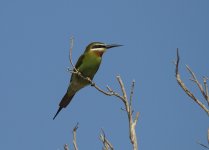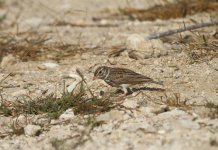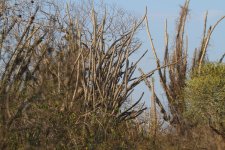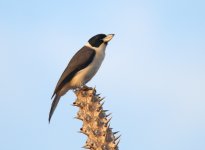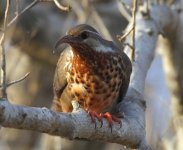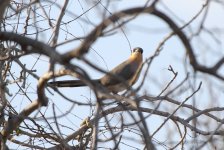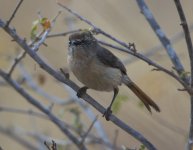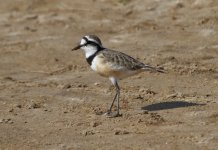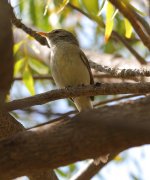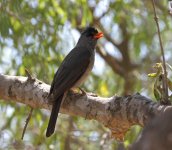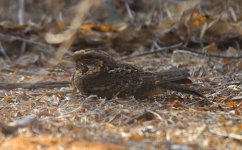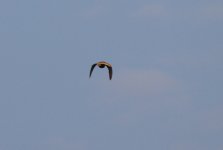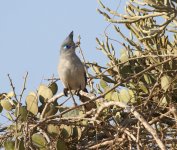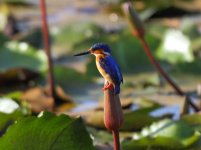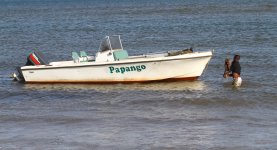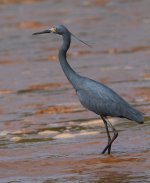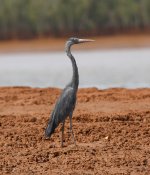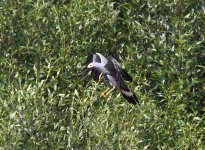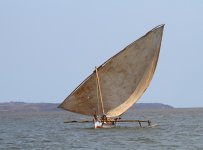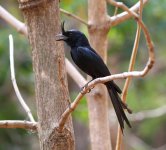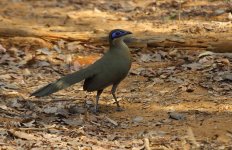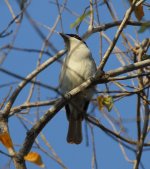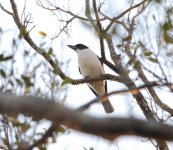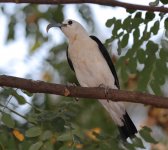edenwatcher
Well-known member
Thanks.
Here's a bit more (internet connection a bit dodgy). Pictures later.
There were further sapphire towns to come before we reached more agricultural areas. We stopped for lunch on the outskirts of a small town about 65km from Toliara. Whilst we ate a greater vasa parrot flew languidly overhead. Suitably replete after another omelette sandwich we continued towards Toliara until in an area of scrub I thought I spotted a perched up Verreaux’s coua. We piled out of the vehicle, but it had either gone or I had miscalled a Namaqua dove! We wandered the scrub for a while seeing a range of species including Madagascar buttonquail, Sakalava weaver and red fody. We then crossed the road and followed a dusty track frequented by bullock carts through the so-called coral rag scrub. It was still fairly early in the afternoon and very hot with the sun bouncing off the white sandy soil – not ideal birding conditions. We were getting a little fed up until Tiana confirmed that this was the site of La Table (named after the distinctive flat-topped hill which dominates the area), home to red-shouldered vanga and Verreaux’s coua. Thus reassured we pressed on, to no avail, though an olive bee-eater posed nicely. Back at the road a Madagascar green pigeon flew over but at 15:45 we admitted defeat and headed on down to Tulear, or Toliara as it is now known. The town is a port, as well as being a holiday destination, and had a rather different feel from other places we had visited, with several wide boulevards. After a visit to the Air Madagascar office for Tiana to confirm our internal flights, during which we were descended on by sellers of vanilla and various knick-knacks, we left the town heading north along the coast towards Ifaty.
For the first time we were not on a surfaced road but a bumpy sandy track which slowed progress down considerably. On the way out of Toliara we past fields full of plastic rubbish – a depressing sight. Startlingly bright red fodies in the road were rather more welcome. Further on we came to a series of pools frequented by waders such as black-winged stilt, Kittlitz’s plover, greenshank and curlew sandpiper though we were unable to find the endemic Madagascar plover. Further on the road overlooked the sea and we stopped to scan an area of mudflats and mangroves. More waders were added to the list including greater sandplover and whimbrel, whilst 3 white-faced whistling ducks wandering through the sand looked rather out of place. In a relatively short space of time the trip list had jumped sharply, albeit at the expense of the “tick percentage”! On the outskirts of a fishing village we spotted 2 herons at the water’s edge – the first was a grey heron, whilst the other was the endangered endemic Humblot’s heron. We were surrounded by interested locals, including a lad with unusually frizzy hair prompting the remark “did your mother not tell you – never play with electricity!” Not that he would have had access to any in what looked a grindingly poor area. By now the sun was setting and we had just one more stop – another unsuccessful look for Madagascar plover - as we turned off the road towards the Hotel Nautilus.
This very nice hotel is popular with groups, mostly French as it is French-owned. There was some initial confusion as we were shown to separate rooms when one of them was actually for Tiana and Sisi! Having ordered dinner we set off to track down the Madagascar nightjars which are common around the hotel. With some nifty Maglite work from Iain we soon had very nice views of our second Madagascar night bird. Our remarkable nautilus-shaped room (I kid you not) was right above the beach and you could hear the waves breaking over the distant reef. After a shower and doing some laundry we had a pleasant dinner (good food here!) before retiring as we had a particularly early start next morning.
Rob
Here's a bit more (internet connection a bit dodgy). Pictures later.
There were further sapphire towns to come before we reached more agricultural areas. We stopped for lunch on the outskirts of a small town about 65km from Toliara. Whilst we ate a greater vasa parrot flew languidly overhead. Suitably replete after another omelette sandwich we continued towards Toliara until in an area of scrub I thought I spotted a perched up Verreaux’s coua. We piled out of the vehicle, but it had either gone or I had miscalled a Namaqua dove! We wandered the scrub for a while seeing a range of species including Madagascar buttonquail, Sakalava weaver and red fody. We then crossed the road and followed a dusty track frequented by bullock carts through the so-called coral rag scrub. It was still fairly early in the afternoon and very hot with the sun bouncing off the white sandy soil – not ideal birding conditions. We were getting a little fed up until Tiana confirmed that this was the site of La Table (named after the distinctive flat-topped hill which dominates the area), home to red-shouldered vanga and Verreaux’s coua. Thus reassured we pressed on, to no avail, though an olive bee-eater posed nicely. Back at the road a Madagascar green pigeon flew over but at 15:45 we admitted defeat and headed on down to Tulear, or Toliara as it is now known. The town is a port, as well as being a holiday destination, and had a rather different feel from other places we had visited, with several wide boulevards. After a visit to the Air Madagascar office for Tiana to confirm our internal flights, during which we were descended on by sellers of vanilla and various knick-knacks, we left the town heading north along the coast towards Ifaty.
For the first time we were not on a surfaced road but a bumpy sandy track which slowed progress down considerably. On the way out of Toliara we past fields full of plastic rubbish – a depressing sight. Startlingly bright red fodies in the road were rather more welcome. Further on we came to a series of pools frequented by waders such as black-winged stilt, Kittlitz’s plover, greenshank and curlew sandpiper though we were unable to find the endemic Madagascar plover. Further on the road overlooked the sea and we stopped to scan an area of mudflats and mangroves. More waders were added to the list including greater sandplover and whimbrel, whilst 3 white-faced whistling ducks wandering through the sand looked rather out of place. In a relatively short space of time the trip list had jumped sharply, albeit at the expense of the “tick percentage”! On the outskirts of a fishing village we spotted 2 herons at the water’s edge – the first was a grey heron, whilst the other was the endangered endemic Humblot’s heron. We were surrounded by interested locals, including a lad with unusually frizzy hair prompting the remark “did your mother not tell you – never play with electricity!” Not that he would have had access to any in what looked a grindingly poor area. By now the sun was setting and we had just one more stop – another unsuccessful look for Madagascar plover - as we turned off the road towards the Hotel Nautilus.
This very nice hotel is popular with groups, mostly French as it is French-owned. There was some initial confusion as we were shown to separate rooms when one of them was actually for Tiana and Sisi! Having ordered dinner we set off to track down the Madagascar nightjars which are common around the hotel. With some nifty Maglite work from Iain we soon had very nice views of our second Madagascar night bird. Our remarkable nautilus-shaped room (I kid you not) was right above the beach and you could hear the waves breaking over the distant reef. After a shower and doing some laundry we had a pleasant dinner (good food here!) before retiring as we had a particularly early start next morning.
Rob




